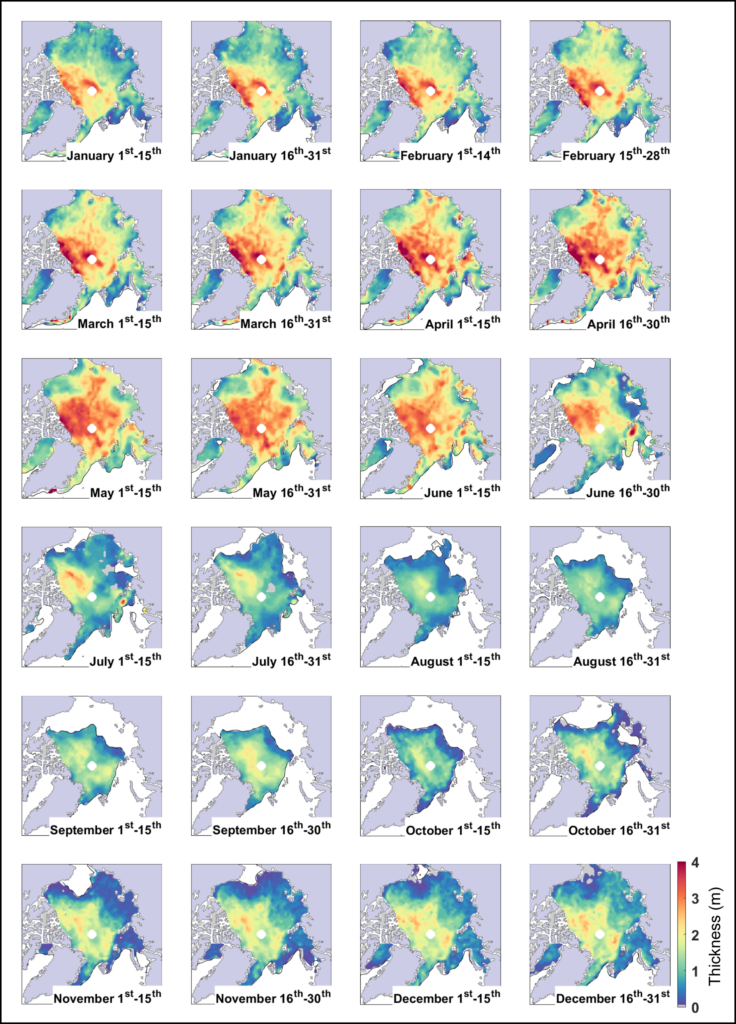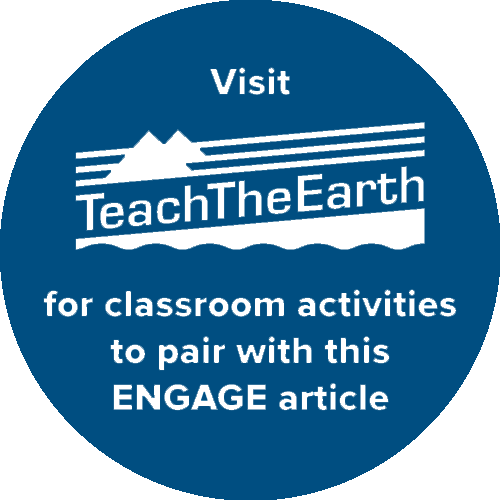Since satellites first measured Arctic sea ice in the 1980s, scientists have noticed a sharp decrease in its extent due to global warming. The trend is clear: Summer Arctic sea ice is now declining at a rate of 13% per decade, but our picture of just how much the sea ice cover is shrinking hasn’t been complete.
Satellites, so far, have been able to measure the thickness of Arctic sea ice only between October and April. That’s because during summer, ponds of meltwater that form on top of the ice confuse satellites—they can’t tell what is ocean and what is melt pond.
But that shortcoming changed recently when researchers reported they found a way around the problem by training artificial intelligence (AI) to differentiate between ocean and melted ice. Their new method, a machine learning technique described in Nature, could improve safety for shipping as well as forecasts of when the Arctic will see its first ice-free summer.
New AI Method
Scientists traditionally have estimated sea ice thickness during the summer by using buoys and specially equipped planes. Satellite measurements, however, are far more accurate and holistic than these methods.
“A lot happens in the Arctic summer—and fast. With thickness measurements throughout summer we can finally start to understand ice melt processes.”
Jack Landy, an associate professor of Earth observation at the University of Tromsø–The Arctic University of Norway, led the new research. “It’s been a high-risk project,” said Landy, who has been developing the project for 5 years. “At times we didn’t know if it was possible.”
Landy and his team applied a machine learning technique to satellite data from the European Space Agency’s CryoSat-2 mission. They also built a model of the satellite’s radar system to check whether CryoSat-2 was measuring ice thickness accurately. The model would allow them to make adjustments if necessary.
The difficult work by Landy and his near-dozen collaborators was worth it, he said: “A lot happens in the Arctic summer—and fast. With thickness measurements throughout summer we can finally start to understand ice melt processes.”
Improved Sea Ice Forecasts
The new summertime data set brings clear benefits to the shipping industry, said Landy. One key observation was that sea ice thickness at the start of summer was a good indicator of the ice extent at its minimum in September. This correlation comes down to the simple fact that thinner sea ice is more likely to melt and break up—a pattern that had been seen in previous modeling studies but lacked supporting observational data from satellites.
“Communities rely on thick summer ice for transport, but it’s not reliable when thinned. We’ve been sounding the alarm, but with no satellite observations to back this up, it was never taken as seriously.”
Verification of the relationship between sea ice in late spring and early autumn, Landy explained, could improve the accuracy of sea ice forecasts for shipping. The Norwegian Meteorological Institute, for instance, currently issues sea ice forecasts, but because of the availability of data, the entire Arctic isn’t covered in the reports.
The new study could also pave the way for improved long-term climate forecasts. “Improved thickness estimates will help us better quantify how quickly we might see the transition to ice-free summers in the Arctic,” said study coauthor Julienne Stroeve, a professor of polar observation at University College London.

The new work supports many predictions made by climate models, said Cecilia Bitz, a professor of atmospheric sciences at the University of Washington who was not involved in the study. “This shows we are on the right track—the patterns we’ve observed in our models are real.”
In addition to shipping and science, the new data are valuable to communities in the Arctic as well. “Communities rely on thick summer ice for transport,” Bitz said, “but it’s not reliable when thinned. We’ve been sounding the alarm, but with no satellite observations to back this up, it was never taken as seriously.”
Satellite Collaborations
“Summer Arctic sea ice thickness is one of the biggest unknowns in my research field,” said Rachel Tilling, a sea ice scientist at the University of Maryland and NASA’s Goddard Space Flight Center, who was not involved in the study.
Tilling said the new method was a key development for scientists studying trends in sea ice change.
Tilling works on NASA’s ICESat-2 satellite mission but previously studied CryoSat-2 data for her Ph.D. The two missions rely on the same altimeter-based principle to measure ice thickness, but CryoSat-2 looks for reflections of radar pulses on the ice surface, whereas ICESat-2 sends down laser pulses.
“The resolution of ICESat-2 means we can detect individual melt ponds, so we’re doing a lot of work to understand how [the ponds] affect our signal and make our summer sea ice thickness [measurements] as accurate as possible,” said Tilling. “Both missions complement each other—there are a lot of exciting opportunities for collaboration.”
—Erin Martin-Jones (@Erin_M_J), Science Writer
This news article is included in our ENGAGE resource for educators seeking science news for their classroom lessons. Browse all ENGAGE articles, and share with your fellow educators how you integrated the article into an activity in the comments section below.


